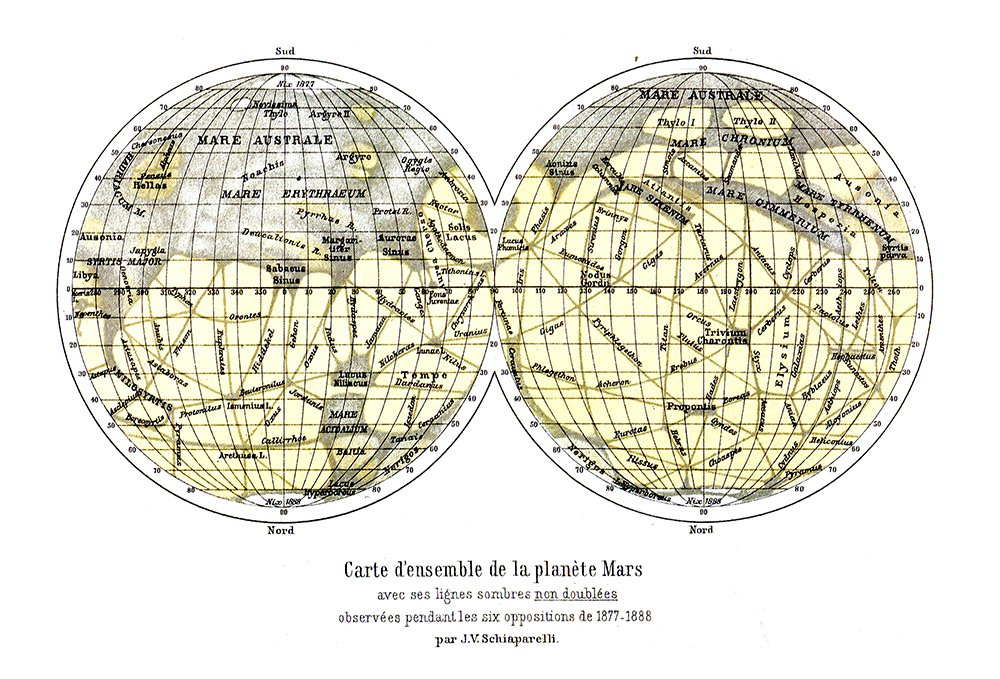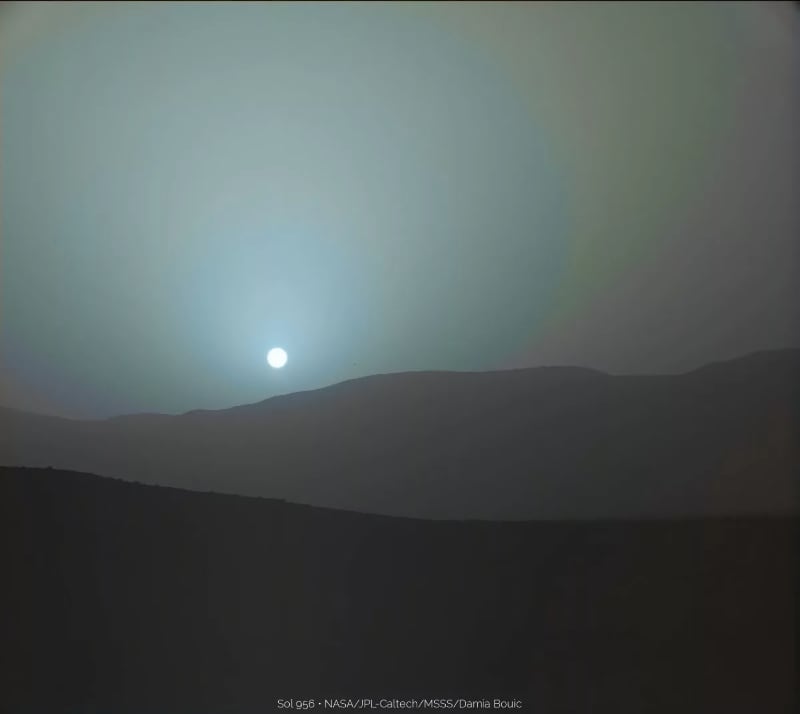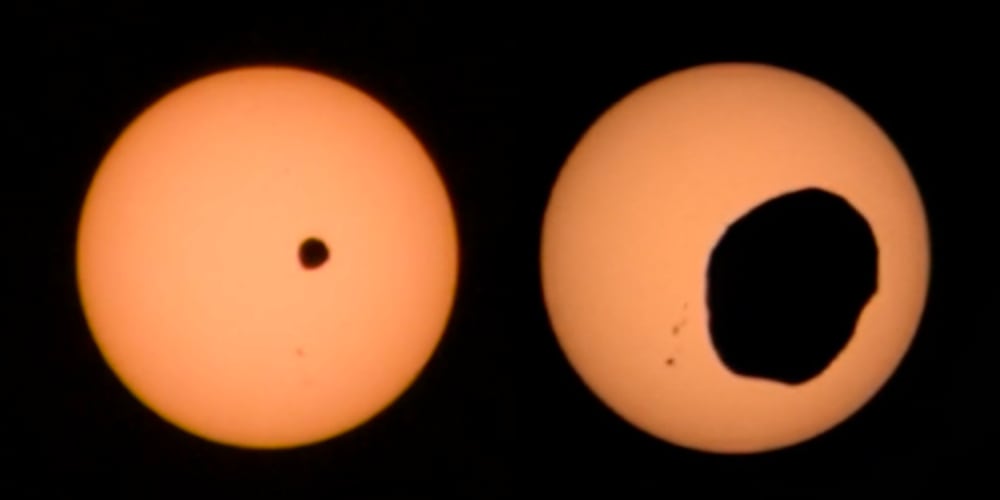⪮ Good Morning

March is named after the Roman god Mars, so this month we've gathered four interesting topics all about the red planet.

Martian Blue Sunset
On Mars, during sunclipse (sunset), the sky of the red planet turns blue. Earth and Mars are the only two places in the Solar System where we can observe sunsets, due to both planets having enough of an atmosphere to refract light.
Sunset on Mars | The Planetary Society
https://www.planetary.org/articles/0506-sunset-on-mars
What Does a Sunrise-Sunset Look Like on Mars?
https://science.nasa.gov/solar-system/planets/mars/what-does-a-sunrise-sunset-look-like-on-mars/
Blue Sunset on Mars As Captured By Opportunity Rover
https://www.youtube.com/watch?v=bKoNWwBlMDc

Martian Solar Eclipse
Mars has two moons which sometimes eclipse the Sun. They are not big enough to block out the entire Sun like Earth's Moon does during a total solar eclipse.
Simeon Schmauß describes some interesting techniques to improve the image quality and animate the frames from the Mars rover to create a captivating look at life on the red planet.
https://fosstodon.org/@stim3on/111802707315874002
Wikipedia: Solar Eclipses on Mars
https://en.wikipedia.org/wiki/Solar_eclipses_on_Mars

Image Credit: NASA/JPL-Caltech - https://photojournal.jpl.nasa.gov/jpeg/PIA25218.jpg
Martian Helicopter, Ingenuity
NASA's Ingenuity Mars Helicopter completed 72 flights totaling 128.8 minutes, covering 17.0 km (10.5 miles).
After an initial successful test flight on April 19, 02021, Ingenuity was tasked with five flight missions. However, three years and 72 flights later, on January 25, 02024, Ingenuity's mission finally ended.
While it looks small, the rotors on this helicopter span ~4 feet (~1.2 meters) tip to tip.
NASA's Martian Helicopter projects
https://mars.nasa.gov/technology/helicopter/
Ingenuity on Wikipedia
https://en.wikipedia.org/wiki/Ingenuity_(helicopter)

Olympus Mons
Olympus Mons is a large shield volcano that last erupted 25 Million years ago.
It stands over two and a half times the size of Mount Everest at 21.9 km and is the tallest known mountain in our solar system. Just the steepest edge of the volcano's cliff edge is 8km, nearly the height of Everest.
The easiest path to the top is a 200 km, relaxed 5-degree incline hike, but the peak is so far over the horizon and you couldn't use it to guide your ascent.
Wikipedia Olympus Mons
https://en.wikipedia.org/wiki/Olympus_Mons
ESA: At the foot of the Red Planet’s giant volcano
https://www.esa.int/Science_Exploration/Space_Science/Mars_Express/At_the_foot_of_the_Red_Planet_s_giant_volcano
YouTube: Climbing Olympus Mons - Tallest Planetary Mountain in the Solar System
https://www.youtube.com/watch?v=QXpzNNARzGI